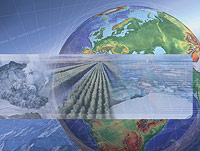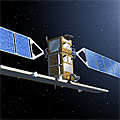| |||
ESA PR 30-2007. Yesterday ESA’s Member States participating in the GMES Programme approved the transition to Phase-2 of Segment 1 of the GMES Space Component Programme.
Oversubscription of the programme by the ESA Council at ministerial level in 2005 was confirmed, with oversubscription to phase 2 of 116%, giving a total amount of €500 million. This additional contribution to the programme will allow ESA to confirm the development of the first three Sentinel satellites.
Moreover, some countries, which were unable to confirm their contributions in time, are expected to subscribe later. The GMES Space Component Programme is co-funded by the European Commission.
Mr Volker Liebig, Director of Earth Observation Programmes, says that, "With GMES, Europe will have a global environmental information system in place which will be unique in the world. Europeans can be proud of that fact. Indeed, other nations give GMES as an example of how operational Earth-observing systems can be used to provide critical information to decision-makers and citizens."
| |||
Sentinel-1 artist's impression |
Prior to launch of the ESA-built Sentinels, which is planned for 2011-12, ESA will coordinate the provision of EO data required by the GMES services currently implemented by the EC. This will help to gradually take GMES from the pre-operational phase to the fully operational stage once the Sentinel satellites are in place.
GMES (Global Monitoring for Environment and Security) is an EU-led initiative aimed at implementing information services dealing with environment and security.





